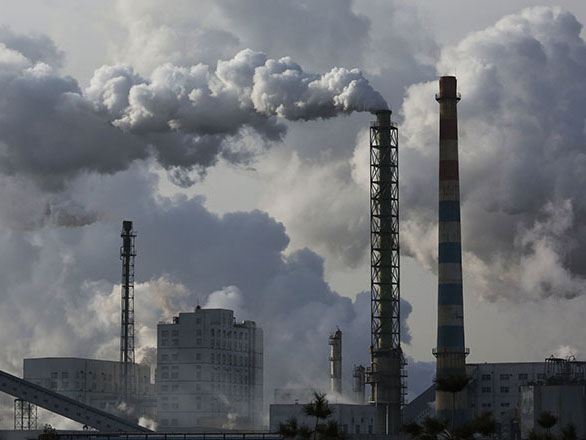
Yulin, locating in Shenfu coalfield, together with Ordos and Shuozhou (ShanXi), is called the “Golden Triangle of Coal” in China. Shenmu is an important part of the Shaanbei Energy and Chemical Base. Since 2004, the economy had been developing dramatically thanks to its rich coal resource and was for the first time listed among “Top 100 Prosperous Counties in China” in 2008. Yulin has been tagged as “the Oriental Kuwait”.
-
14 August 2017
On 4 November 2016, the historic Paris Climate Accord came into effect after being agreed upon in late 2015. 195 of 197 nations agreed to be bound by the agreement. Since then, 153 nations have ratified. The agreement outlined emissions reduction goals specific to each nation – both developed and developing – in order to keep global temperature rise this century well below 2 degrees celsius above pre-industrial levels. More ambitiously, the agreement targeted a limit of 1.5 degrees. In an aim to achieve this, measures were outlined to enhance support for developing nations and to ultimately bring all nations into a common cause.
The significance of the target is not to be understated, and neither is the effort to ensure nations are working to combat climate change from the highest level. But while significant progress can be made with this top-down approach, it is not the only way. The United States’ recent withdrawal from the Paris Accord was met by cities and companies around the world, who were more determined than ever to uphold the treaty.
Outside of the Paris Accord, there have been numerous organisations pledging to reduce greenhouse gas emissions over the coming years to play their part in limiting the impacts of climate change. This has happened on an individual basis as well as through group efforts, prompted by initiatives such as We Mean Business or Business Backs Low-Carbon USA. In Australia and around the world, myriad sustainability initiatives – such as the Green Star rating system, GreenTag, or the Water Efficiency Labelling and Standards (WELS) scheme – provide consumers and businesses with reliable third-party benchmarks.
Issues of greenwashing and failing to take adequate measures to meet emissions reduction targets are still prevalent, but even their presence indicates a pressure to conform to tackling climate change. As more and more consumers become aware of their own small-scale choices, they have demanded concrete targets and concrete evidence of steps taken – for instance, closing the loop, increasing transparency and expanding the definition of sustainable manufacturing to include entire supply chains.
Emissions reduction targets are helpful in kick-starting change by providing quantifiable goals to follow, and the unbiased information consumers need to make their own decisions. Assisting in the education of consumers through transparency, quantifiable goals and clear labelling, providing low-emissions products and services, and reducing embedded emissions present in the supply chain are all ways that businesses can reduce their own impact on the environment.
Recognising this, HP has committed to Paris Climate Agreement originally set at the end of 2015, and signed numerous public statements and initiatives in support of a strong climate response. The company has also pledged support for the United Nations Sustainable Development Goals, which outline 17 different objectives towards providing climate action, quality education, gender equality, eliminating poverty and hunger, and other similar initiatives.
In line with these initiatives are the goals HP have set for themselves. These intra-company objectives stretch across their entire supply chain, product portfolio and model for business. These sustainability goals include reducing the greenhouse gas intensity of their supply chain by 10 percent by 2025, and of their product portfolio by 25 percent by 2020. Various social commitments – such as providing better learning outcomes for 100 million people in the decade from 2015 – complement these more statistical goals.
HP are additionally on-track to achieve 40 percent renewable energy usage in their global operations by 2020. Their ultimate goal is 100 percent renewable electricity. They also aim to reduce their potable water consumption by 15 percent by 2025 compared to 2015, and eliminate all deforestation associated with their paper and paper-based product packaging by 2020.
As HP Sustainability Manager Lynn Loh noted, “Our priorities are to decouple business growth from consumption, [to] disrupt industry business models, and [to] digitise supply chains and production. By following those three priorities, we can not only cut down on the amount of materials that are used by our customers and by us, but also lead the way in setting an industry standard for a more sustainable future.”
Architecture & Design are proud to announce HP as the 2017 ‘Achievement of Merit’ Sponsor for this year’s Sustainability Awards. To find out more about the Awards, click here.
Brought to you by:

